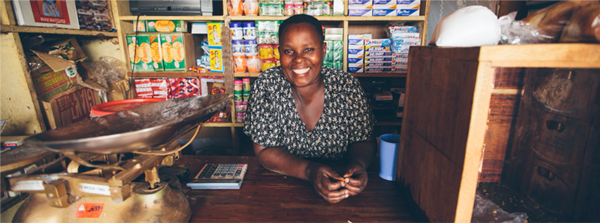
The private sector plays a critical and powerful role in reducing the need for foreign assistance. Despite its importance, many development organizations may not know how to most effectively engage with the private sector to create better outcomes for communities. USAID has prioritized Private Sector Engagement (PSE) as a strategic approach to international development and aims to align with private sector partners to generate better development and humanitarian outcomes.
The U.S. Agency for International Development (USAID) partnered with the University of Notre Dame’s Pulte Institute for Global Development to find solutions to making evidence-based, informed decisions when engaging the private sector. The result was the development of a unique new tool called the Private Sector Engagement Evidence Gap Map.
The PSE Evidence Gap Map provides users with an interactive, visual compilation of case studies, articles, and other resources which will help facilitate USAID’s interactions with the private sector. A living resource that is continuously updated, the tool allows users to search for documents by filtering for criteria such as region, country, and sector.
Paul Perrin, Director of Evidence & Learning for Notre Dame’s Pulte Institute for Global Development and Associate Professor of the Practice in the Keough School of Global Affairs, is leading the project development.
“We took the value propositions of both the private sector and development actors and put them into a matrix that conceptualizes PSE,” said Perrin. “The map allows users to not only see existing knowledge, but also where any ‘gaps’ may exist in our understanding of PSE. We hope this might encourage additional investment in research and evaluation to build this evidence base.”
The map is part of a series of tools being co-created as part of a multi-year project funded by USAID LASER PULSE. The consortium hopes to pilot these tools in select USAID missions in 2020.
“One of USAID’s operational principles for PSE is to build and act on the evidence of what works, and what does not, in PSE,” said Kathy Rostkowski, USAID’s PSE Evidence & Learning Team Lead. “We hope that this tool will help facilitate the use of evidence in PSE approaches and help target evidence building efforts to fill the knowledge gaps that remain.”
Several Notre Dame students supported Perrin on the project, including graduate student Pawas Manandhar and undergraduates Gretchen Bruening and Lauren Watts. The team also received support from Catholic Relief Services.
While the tool was designed primarily for USAID staff, it may also appeal to implementing partners and private sector actors seeking to engage in development work. Those interested in learning more about the tool can join a virtual webinar on Tuesday, July 21, 2020 at 9:00 am EST. Registration is now open online.
The Private Sector Engagement Evidence Gap Map is a partnership between USAID, the University of Notre Dame, and Purdue University. It is funded by LASER (Long-Term Assistance and Services for Research) PULSE (Partners for University-Led Solutions Engine): a consortium dedicated to bringing together development practitioners and academic researchers to collaborate on the major development challenges facing USAID-priority countries.
The Pulte Institute for Global Development—an integral part of the Keough School of Global Affairs at the University of Notre Dame—works to address global poverty and inequality through policy, practice, and partnership.
Contact: Heather Asiala, Communications Program Manager, Pulte Institute for Global Development, 574-631-0236, h.asiala@nd.edu
Originally published by at pulte.nd.edu on June 30, 2020.